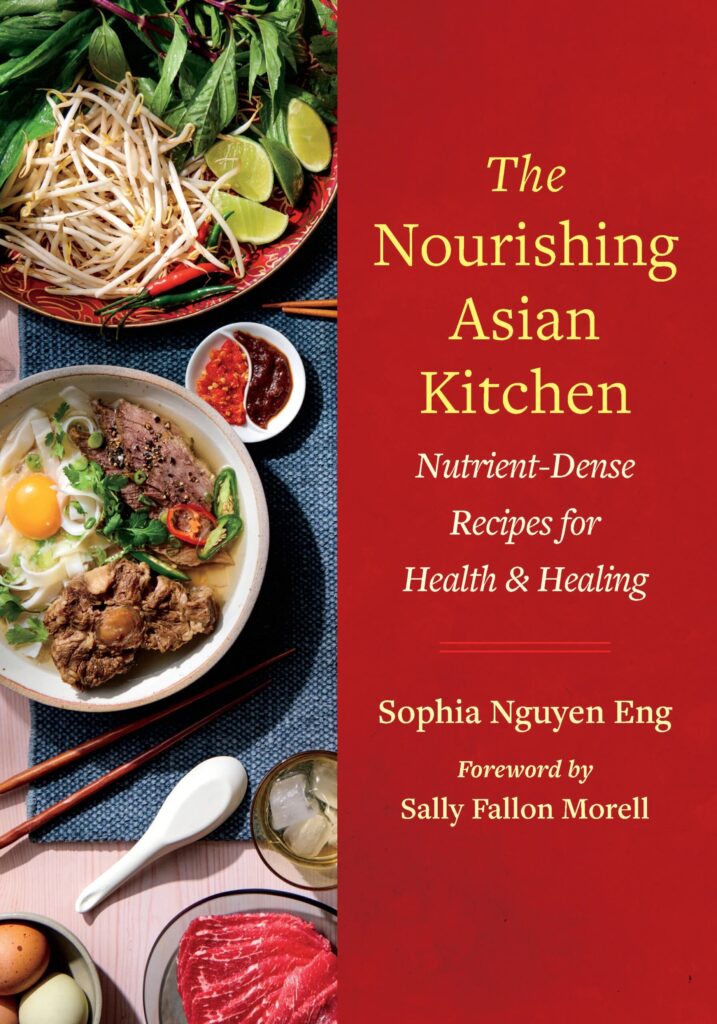
By Sophia Nguyen Eng
Chelsea Green Publishing, 2023
320 pages, paperback, $34.95
In this age of quick internet searches, a cookbook has to resonate deeply for me to consider purchasing it. “The Nourishing Asian Kitchen” belongs on everyone’s cookbook shelf. It is an innovative back-to-the land approach to Asian foods, the perfect book for anyone wanting clean, garden-to-plate, easy and nutritious meals. Finally there is a cookbook of Asian recipes that uses local, farm-raised ingredients.
Author Sofia Nguyen Eng tells of moving to the Appalachian Mountains in Tennessee with a goal to start a family farm and to honor the Vietnamese cultural food traditions of her parents who fled Vietnam in 1975. Drawing on culinary traditions of Vietnam, Korea, China and Japan, but moving away from the processed foods often used in the United States when making such foods, Eng employs regenerative farming practices and whole local foods.
As I read through the chapters of this book, I was reminded of the premises of the “Blue Zones,” the areas of the world where higher percentages of people live to 100 years or older. The commonalities of the people in these areas are exercise; community and family; Ikigai, which is the Japanese term for excitement about life and enthusiasm about learning; and diet. All of the Blue Zones are somewhat remote or, in the case of religious communities, intentionally isolated. They eat regional, whole-food, land-based diets, more common before processed and fast foods became readily available. Eng taps into nutrient-dense whole foods, including animal foods, that are not processed, just prepared. She also draws on Weston Price and Sally Fallon’s studies of whole-food diets.
Eng’s recipes emphasize farm-fresh ingredients, traditional cooking methods, nutrient-rich flavor and seasonality. Many recipes are gluten-free. Many are vegetarian, often using wild-gathered ingredients. Wild bibimbap and gluten-free tempura are two impressive recipes that I tried. Nettles are used in numerous recipes. Eng covers fermentation, traditional cooking methods and seasonings. Most exciting are the recipes for making some of the basic seasonings like anchovy fish sauce, hoisin sauce, gochujang, and lemongrass chili oil with your own unprocessed ingredients. (Lemongrass thrives in a pot in a sunny winter window.) The section on sauces is worth the price of the book.
Eng advocates avoiding processed seed oils, in favor of olive, coconut and sesame oils. Some recipes use lard, or organ meats. There is an emphasis on working with bone broth, beef tallow and lard. All recipes can be made with substitutions.
As a farmer who has eaten homegrown unprocessed food since my late teens, and who is now noticing my doctors’ surprise when they see that I need no medications in my mid-60s, I find this book to be a great boon, a new resource for helping me make more of my own wholesome foods. “The Nourishing Asian Kitchen” has earned a place on my bookshelf, though it is often on my kitchen counter or table, ready to inspire a new meal.
Roberta Bailey, Vassalboro, Maine
